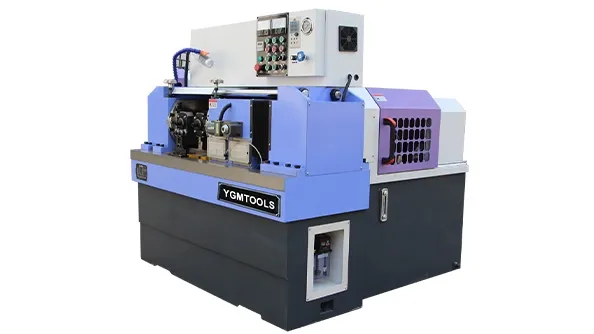
-
 Afrikaans
Afrikaans -
 Albanian
Albanian -
 Amharic
Amharic -
 Arabic
Arabic -
 Armenian
Armenian -
 Azerbaijani
Azerbaijani -
 Basque
Basque -
 Belarusian
Belarusian -
 Bengali
Bengali -
 Bosnian
Bosnian -
 Bulgarian
Bulgarian -
 Catalan
Catalan -
 Cebuano
Cebuano -
 Corsican
Corsican -
 Croatian
Croatian -
 Czech
Czech -
 Danish
Danish -
 Dutch
Dutch -
 English
English -
 Esperanto
Esperanto -
 Estonian
Estonian -
 Finnish
Finnish -
 French
French -
 Frisian
Frisian -
 Galician
Galician -
 Georgian
Georgian -
 German
German -
 Greek
Greek -
 Gujarati
Gujarati -
 Haitian Creole
Haitian Creole -
 hausa
hausa -
 hawaiian
hawaiian -
 Hebrew
Hebrew -
 Hindi
Hindi -
 Miao
Miao -
 Hungarian
Hungarian -
 Icelandic
Icelandic -
 igbo
igbo -
 Indonesian
Indonesian -
 irish
irish -
 Italian
Italian -
 Japanese
Japanese -
 Javanese
Javanese -
 Kannada
Kannada -
 kazakh
kazakh -
 Khmer
Khmer -
 Rwandese
Rwandese -
 Korean
Korean -
 Kurdish
Kurdish -
 Kyrgyz
Kyrgyz -
 Lao
Lao -
 Latin
Latin -
 Latvian
Latvian -
 Lithuanian
Lithuanian -
 Luxembourgish
Luxembourgish -
 Macedonian
Macedonian -
 Malgashi
Malgashi -
 Malay
Malay -
 Malayalam
Malayalam -
 Maltese
Maltese -
 Maori
Maori -
 Marathi
Marathi -
 Mongolian
Mongolian -
 Myanmar
Myanmar -
 Nepali
Nepali -
 Norwegian
Norwegian -
 Norwegian
Norwegian -
 Occitan
Occitan -
 Pashto
Pashto -
 Persian
Persian -
 Polish
Polish -
 Portuguese
Portuguese -
 Punjabi
Punjabi -
 Romanian
Romanian -
 Russian
Russian -
 Samoan
Samoan -
 Scottish Gaelic
Scottish Gaelic -
 Serbian
Serbian -
 Sesotho
Sesotho -
 Shona
Shona -
 Sindhi
Sindhi -
 Sinhala
Sinhala -
 Slovak
Slovak -
 Slovenian
Slovenian -
 Somali
Somali -
 Spanish
Spanish -
 Sundanese
Sundanese -
 Swahili
Swahili -
 Swedish
Swedish -
 Tagalog
Tagalog -
 Tajik
Tajik -
 Tamil
Tamil -
 Tatar
Tatar -
 Telugu
Telugu -
 Thai
Thai -
 Turkish
Turkish -
 Turkmen
Turkmen -
 Ukrainian
Ukrainian -
 Urdu
Urdu -
 Uighur
Uighur -
 Uzbek
Uzbek -
 Vietnamese
Vietnamese -
 Welsh
Welsh -
 Bantu
Bantu -
 Yiddish
Yiddish -
 Yoruba
Yoruba -
 Zulu
Zulu
Understanding the Operation of OEM Thread Rolling Machines for Efficient Production
Understanding the OEM Thread Rolling Machine Working Mechanism and Applications
In the precision manufacturing industry, high-quality fasteners and components are crucial for ensuring the reliability and efficiency of various mechanical systems. One of the key technologies employed in the production of these components is the OEM (Original Equipment Manufacturer) thread rolling machine. This innovative piece of equipment plays a vital role in shaping and forming threads on metal parts, making it an essential tool for manufacturers across different sectors. In this article, we will delve into the working principles of thread rolling machines, their advantages, and their applications.
What is a Thread Rolling Machine?
A thread rolling machine is a specialized piece of equipment designed to create threads on cylindrical objects through a cold-forming process. Unlike traditional machining methods that cut material away to form threads, thread rolling involves deforming the material into its desired shape without removing any material. This process results in stronger and more precise threads, which are crucial for the performance and durability of fasteners.
Working Mechanism of OEM Thread Rolling Machines
The operation of a thread rolling machine is based on the principle of plastic deformation. Typically, the process begins with the use of a cylindrical blank that is fed into the machine. The machine utilizes two or more dies—hard metal tools shaped like the desired thread profile—to engage with the blank.
1. Feeding the Workpiece The cylindrical blank is placed between the dies. The machine's feed mechanism often includes a conveyor or a feed arm that positions the blank correctly.
2. Rolling Action As the machine operates, the dies rotate and move toward each other. This rolling action compresses the material of the blank, forcing it into the shape of the thread profile created by the dies. The machine may either use a reciprocating or continuous rotation system, depending on the design and requirement.
3. Cooling and Lubrication To ensure the longevity of the dies and the quality of the threads, lubrication is often used during the rolling process. This minimizes friction, reduces heat buildup, and enhances surface finish. In some machines, cooling systems are integrated to maintain optimal temperatures.
oem thread rolling machine working

4. Finishing Once the rolling process is complete, the newly formed threads may undergo additional processes such as heat treatment, surface finishing, or inspection to ensure they meet the necessary specifications.
Advantages of Thread Rolling
The use of OEM thread rolling machines comes with numerous benefits that make them an attractive choice for manufacturers
- Enhanced Strength The cold-forming process improves the strength of the threads by creating a dense structure, which is more resistant to fatigue and stress. - Dimensional Accuracy Thread rolling results in high dimensional accuracy, ensuring that the produced threads fit perfectly into their applications. - Material Efficiency As no material is cut away, there is minimal waste, making the process more economical and environmentally friendly. - Reduced Production Time The rapid production capabilities of thread rolling machines significantly lower manufacturing times compared to traditional machining.
Applications of Thread Rolling Machines
OEM thread rolling machines are used across various industries, including
- Automotive Producing bolts, screws, and other fasteners that are critical for vehicle assembly and safety. - Aerospace Creating lightweight yet strong components that meet stringent safety standards. - Construction Manufacturing structural components that require strong and durable threading. - Electronics Producing precision fasteners for electronic devices that demand high reliability.
Conclusion
The OEM thread rolling machine stands out as a crucial asset in modern manufacturing, offering advantages in strength, accuracy, and efficiency. As industries continue to demand high-quality components, the role of thread rolling machines will likely increase, driving innovation and improvements in production processes. Understanding the workings and benefits of these machines enables manufacturers to make informed decisions, optimizing their production lines for better performance and cost-effectiveness. With the ongoing advancements in technology, the future of thread rolling seems promising, paving the way for enhanced capabilities and broader applications in various sectors.
